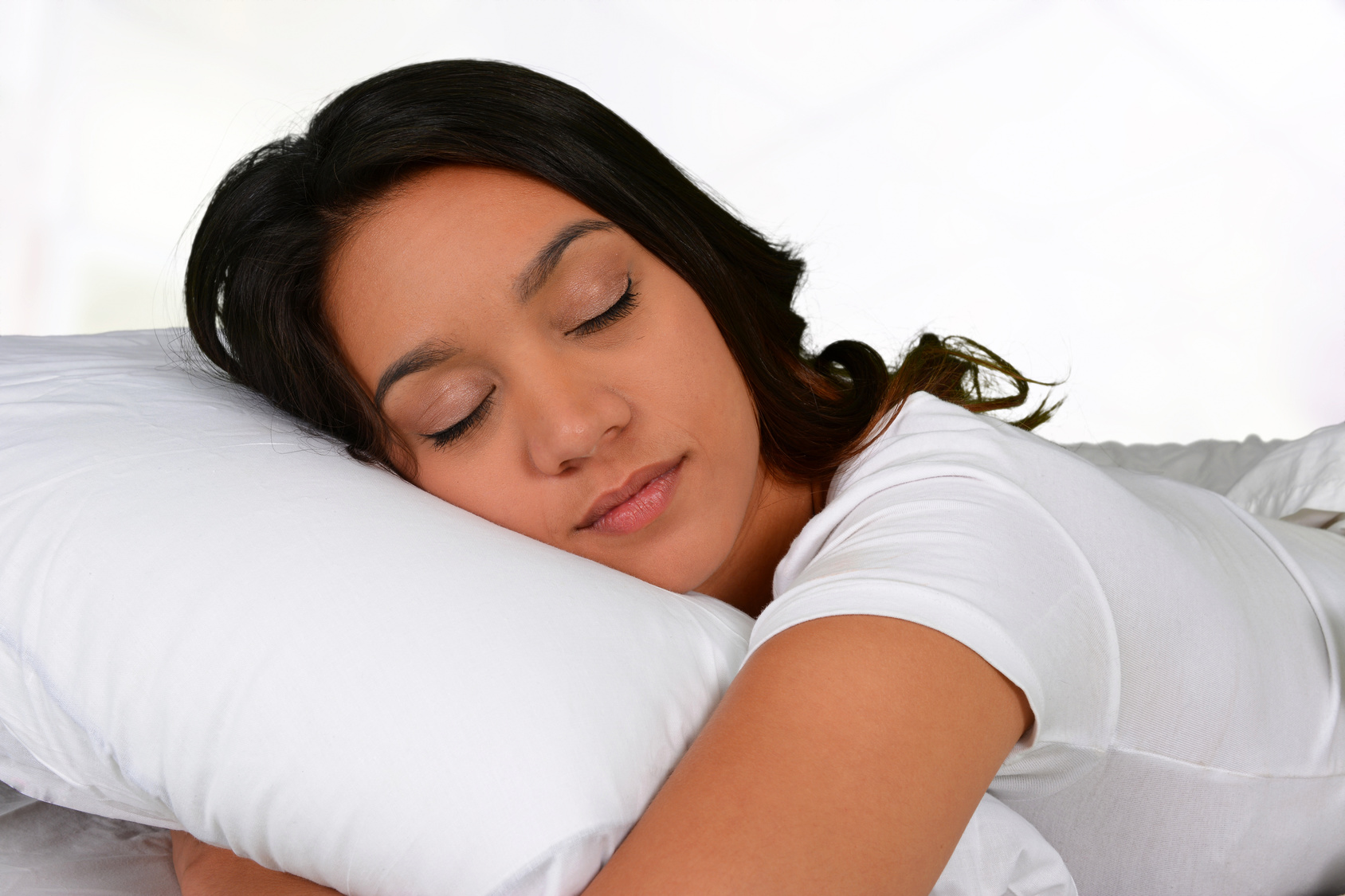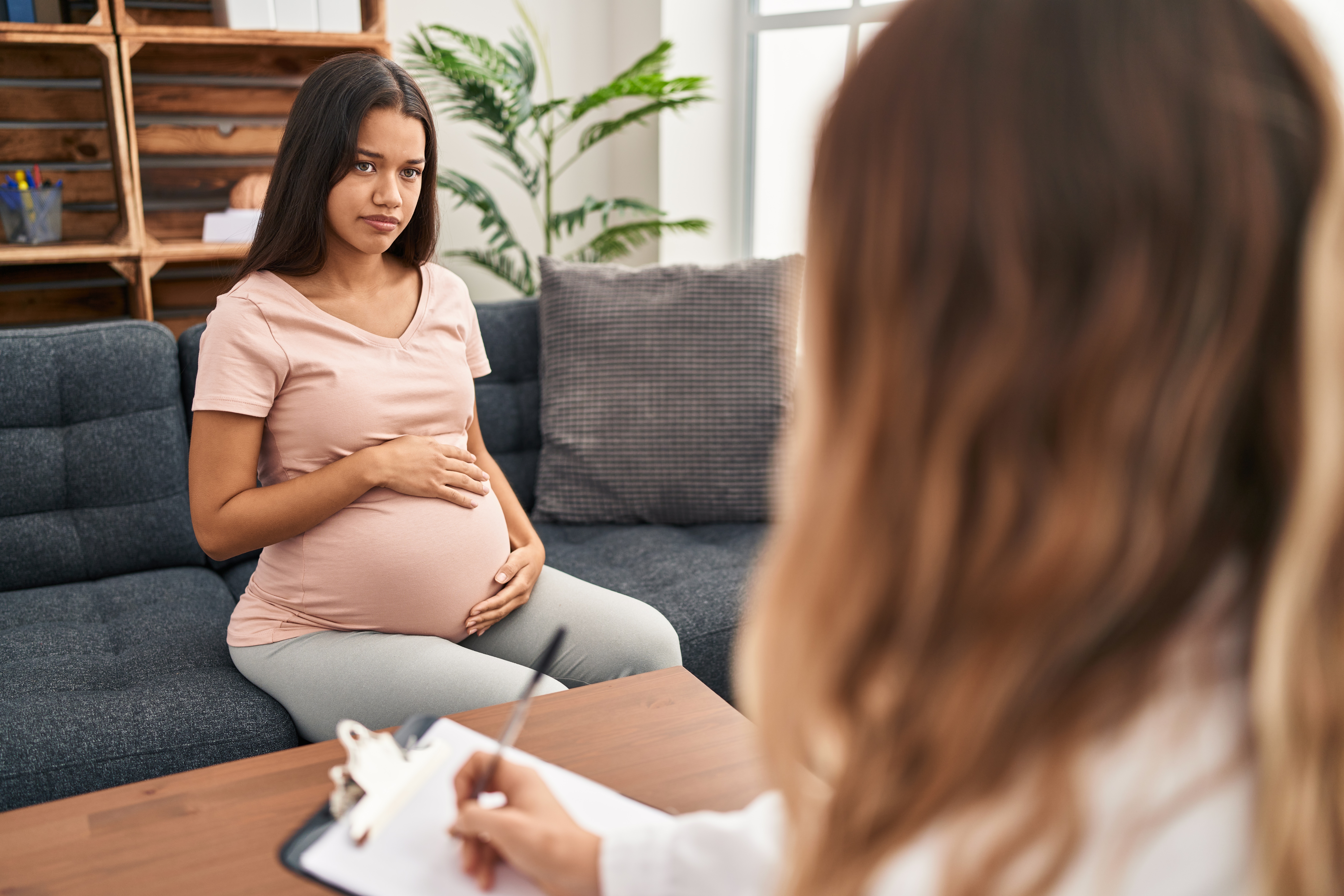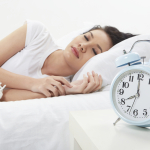In a new mother, sleep is disrupted by repeated awakenings of the infant, but hormonal factors also seem to play a role. Immediately after childbirth, levels of the reproductive hormones, estrogen and progesterone, drop precipitously. It is believed that, because these hormones modulate neurotransmitter systems in the brain responsible for sleep quality, this dramatic hormonal shift may cause significant disruptions in sleep.
While the fact that new mothers are often sleep-deprived will surprise few, the concern is poor sleep is considered to be a risk factor for depression, and depression may in turn contribute to or exacerbate sleep disturbance. Several studies indicate that postpartum women with depressive symptoms experience poorer sleep quality, less total sleep time, longer sleep latency (longer time to fall asleep), less time in REM sleep, and more sleep disturbance than women without depressive symptoms.5-9
One study estimated that women with postpartum depressive symptoms sleep about 80 minutes less per night than women who are not depressed.2 Another study also showed that because infants’ sleep patterns tend to follow maternal circadian rhythms, the infants of depressed mothers may also experience poor sleep quality, which may further exacerbate maternal depressive symptoms.9
The studies mentioned above were limited by the fact that they did not use structured clinical interviews to diagnose postpartum depression (PPD), and only a few used objective measures of sleep quality. Due to the limitations of the previous studies and because few studies have looked at sleep quality in women with formally diagnosed postpartum depression, a recent study from Posmontier and colleagues examined the differences in sleep quality between women with and without PPD.
This study included 46 women who were 6-26 weeks postpartum; 23 women had PPD and 23 women were not depressed. Participants were matched on variables affecting sleep quality, including type of delivery, weeks postpartum and parity. They were recruited from obstetric practices; women were excluded if they had any disabling medical illness, long-term infant complications, ongoing physical or sexual abuse, ongoing substance abuse or dependence, and traumatic life events within a year of childbirth.
A structured clinical interview (MINI) was used to determine eligibility, and the severity of postpartum depression was measured using the PDSS, a 35-item self-rated scale with scores ranging from 35-175. Scores of 35-39 indicate normal adjustment, 60-79 mild to moderate symptoms of PPD, and scores of 80-175 major PPD. Sleep quality was objectively measured using wrist actigraphy at home for seven consecutive nights. Participants were asked to fill out activity logs and also provided information regarding various psychosocial and demographic variables.
Most of the participants were highly educated women who lived with their partners, and most were employed and had a maternity leave of 6 weeks. The majority of women were between 6 and 13 weeks postpartum, multiparous and had a vaginal birth. Most breastfed and had help from family members. Women with PPD had significantly more likely to have male infants (p<.001) and more nighttime infant awakenings (p<.05) compared to women without PPD. Mean PDSS scores were significantly higher for women with PPD (95.38) compared to women without PPD (45.34, p<.001). Women with PDSS scores greater than or equal to 80 were more likely to have personal histories of depression.
Women with PPD had poorer sleep quality and lower sleep efficiency than women without PPD. Women with PPD had longer sleep latency (p<.05), more wake time after sleep onset or WASO (p<.05), and thus a lower sleep efficiency (p<.05) than women without PPD. There were no significant differences in sleep quality within the subgroup of women with PPD who did or did not participate in psychotherapy. Poor sleep quality significantly predicted increased PPD symptom severity.
The authors conclude that clinicians must address measures to improve sleep quality in depressed mothers in order to decrease the severity of depressive symptoms. Furthermore, researchers must develop interventions which facilitate better sleep quality in women with postpartum depression. The authors suggest that clinicians educate women about good sleep hygiene and outline general recommendations taken from the American Academy of Sleep Medicine (summarized here).
The website of the American Academy of Sleep Medicine, specifically the section on Sleep & Pregnancy, provides helpful tips for promoting sleep hygiene during pregnancy and the postpartum period. The recommendations specific to the postpartum period include catching up on lost sleep with naps and, if possible, having the new mother take the baby out for a walk every morning to improve the maternal and child circadian rhythms. Postpartum women should be encouraged to discuss their own sleep habits and problems with their families and clinicians, just as they discuss their infants’ sleep issues.
Since some postpartum sleep disruptions may not respond to these basic strategies, the authors discussed other interventions specific to the postpartum period, including progressive relaxation and deep breathing, techniques designed to improve infant sleep, and how to maximize opportunities for sleep(Stremler et al, 2006).
The authors also point out that women with postpartum depression who have persistent sleep problems despite non-pharmacological measures may benefit from pharmacologic consultation; improving sleep quality and treating postpartum depression will help restore maternal functioning and improve maternal-infant outcomes.
April Hirschberg, MD
- Posmontier B. Sleep quality in women with and without Postpartum Depression. JOGNN 2008; 37:722-737.
- Lee, KA, McEnany G, Zafte ME. REM sleep and mood state in childbearing women: Sleepy or weepy? Sleep 2000; 23(7), 877-885.
- Goyal D, Gay CL, Lee KA. Patterns of sleep disruption and depressive symptoms in new mothers. Journal of Perinatal and Neonatal Nursing 2007; 21(2), 123-129.
- Ross LE, Murray BJ, Steiner M. Sleep and perinatal mood disorders: A critical review. Journal of Psychiatry and Neuroscience 2005; 30(4), 247-256.
- Da Costa D, Drista M, Rippen N, Lowensteyn I, Khalife S. Health-related quality of life in postpartum depressed women. Archive of Women’s Mental Health 2006; 9(2), 95-102.
- Dennis CL, Ross L. Relationship among infant sleep patterns, maternal fatigue and development of depressive symptomatology. Birth 2005; 32(3), 187-193.
- Wulff K, Siegmund R. Circadian and ultradian time patterns in human behavior. Part 1: Activity monitoring of families from prepartum to postpartum. Biological Rhythm Research 2000; 31(5), 581-602.
- Huang CM, Carter PA, Guo JL. A comparison of sleep and daytime sleepiness in depressed and non-depressed mothers during the early postpartum period. Journal of Nursing Research 2004; 12(4)287-296.
- Hisock H & Wake M. Infant sleep problems and postnatal depression; A community-based study. Pediatrics 2001; 107(6) 1317-1322.
- Beck C & Gable R. Postpartum depression screening scale. Los Angeles: Western Psychological Associates. 2002.
- American Academy of Sleep Medicine. (2009) Sleep hygiene: The healthy habits of good sleep athttp://www.sleepeducation.com/Hygiene.aspx
- Stremler R, Hodnett E, Lee K, MacMillan S, Mill C, Ongcangco L et al. A behavioral-educational intervention to promote maternal and infant sleep: A pilat randomized, controlled trial. Sleep 2006; 29(12), 1609-1615.
- American Academy of Sleep Medicine. (2006) Sleep & Pregnancy. Retrieved Feb 17, 2010, from the website at www.sleepeducation.com.








Interesting article. Lack of sleep definetly exacerbates/helps cause depression. Education about infant sleep is essential. Dr Karp’s methods are good and work well and Dr Weisbluth’s methods might work for some as well.